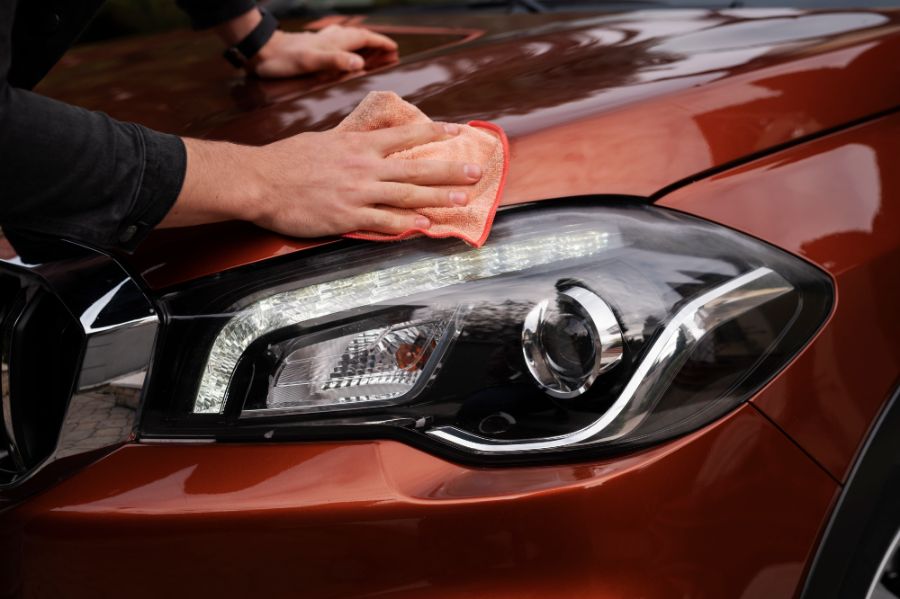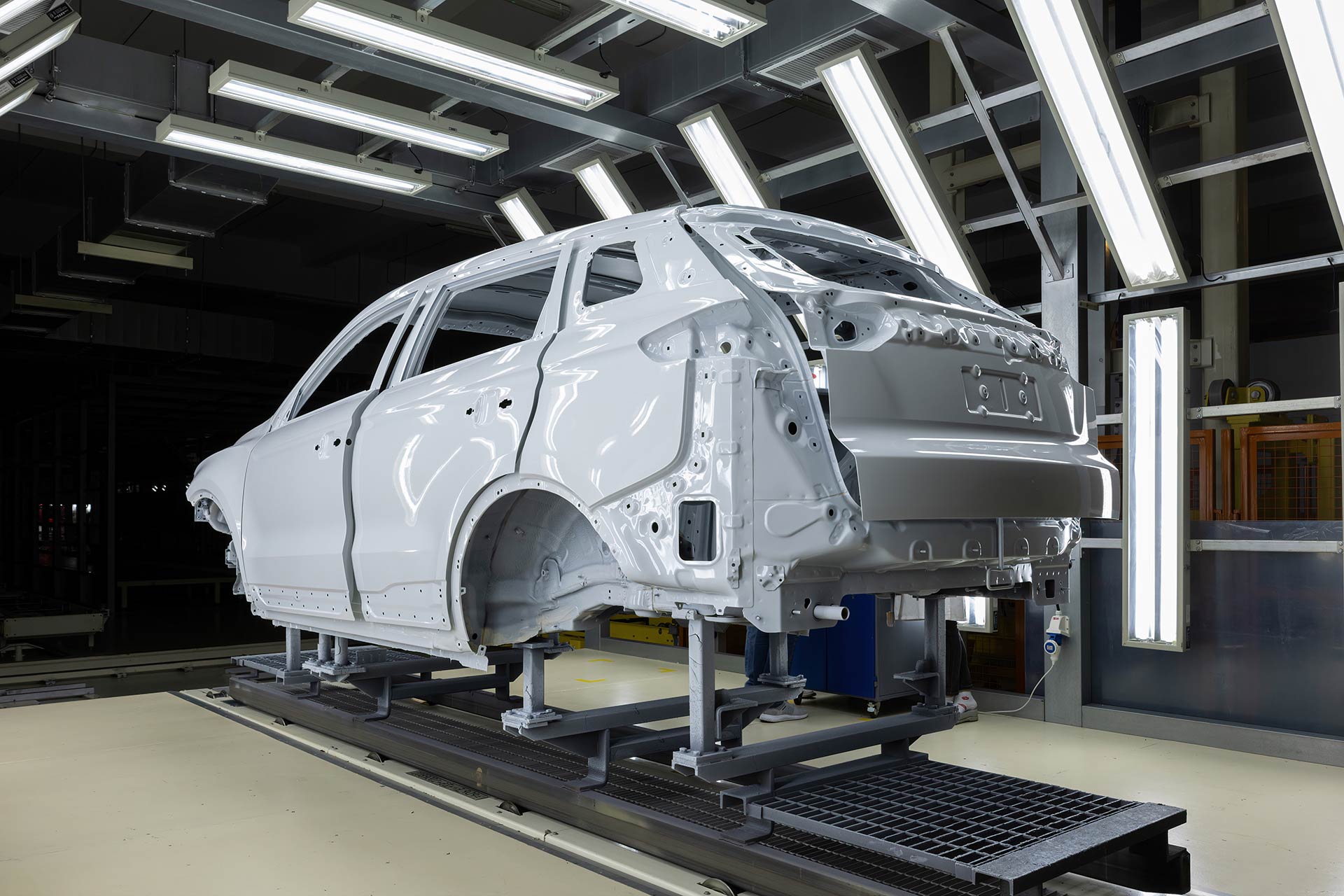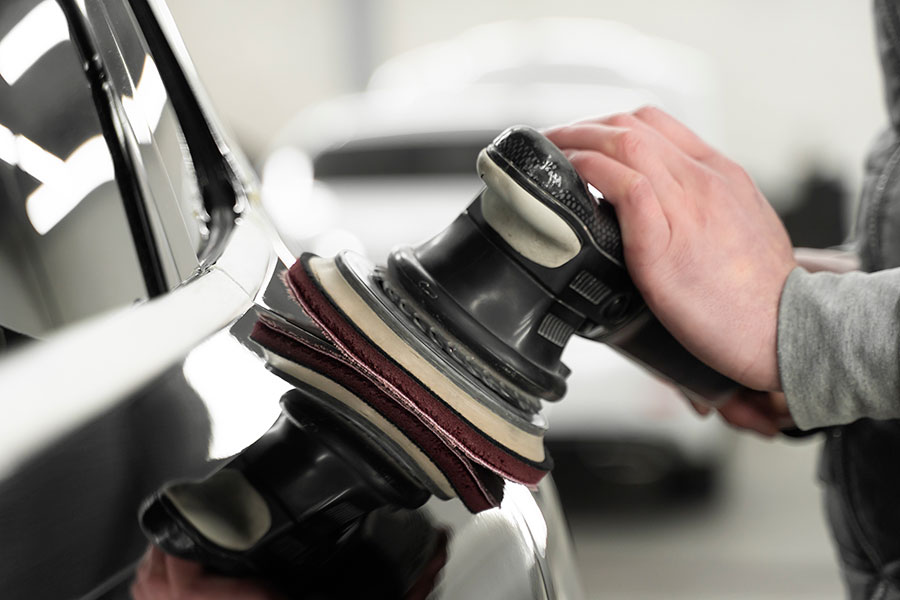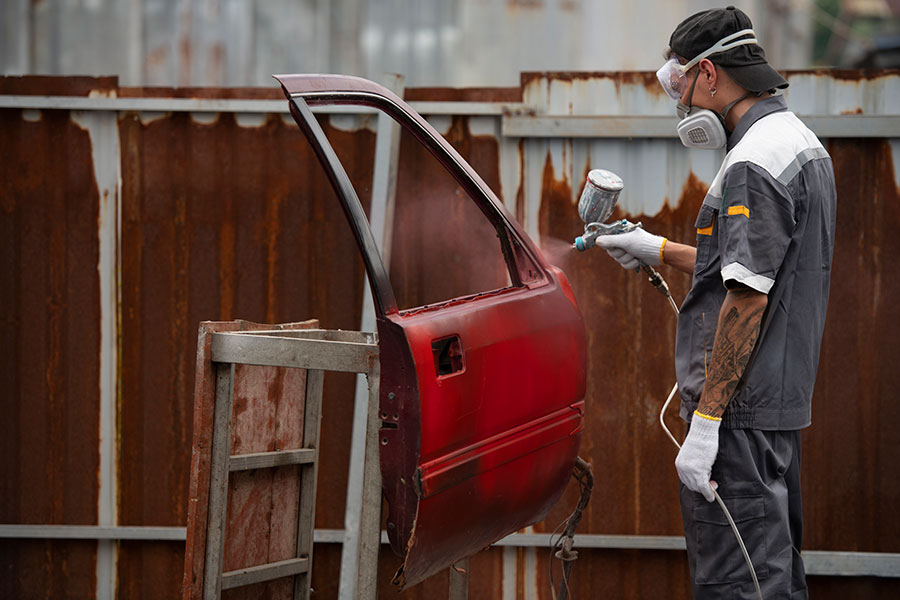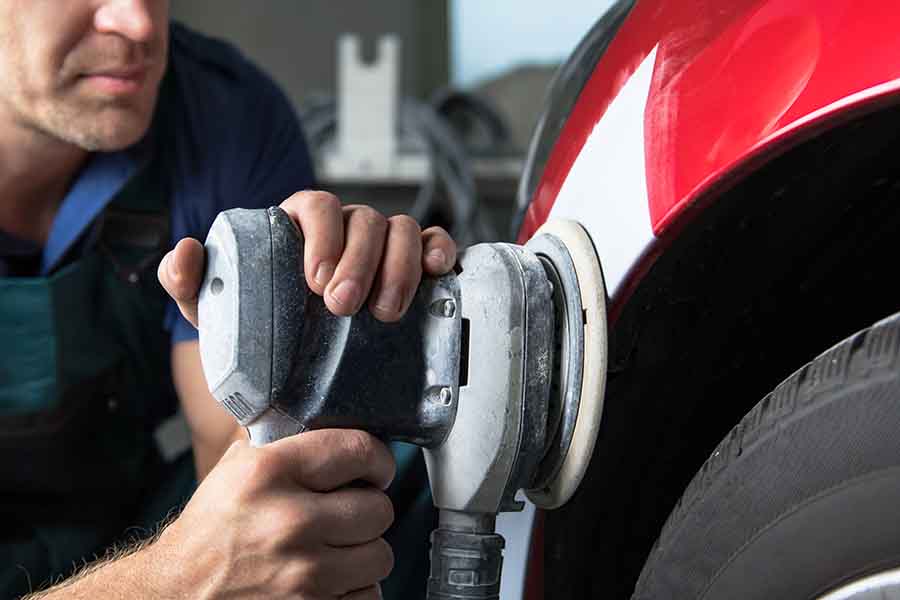Navigating the aftermath of a car accident can feel like walking through a maze blindfolded, especially when it comes to assessing the damage to your vehicle. On one hand, you have insurance companies urging you to settle quickly, and on the other, there's the daunting task of ensuring your car is thoroughly checked and properly fixed. That's where a solid car damage assessment guide becomes your beacon of clarity in a fog of confusion. This guide aims to simplify the complex process, breaking down everything from understanding minor scratches to major collision damages. With straightforward advice and expert insights, you'll be equipped to make informed decisions, ensuring your car returns to its pre-accident glory or better.
Understanding Car Damage Assessment
Damage Types
Car damage assessment is a critical step in maintaining a vehicle's health and processing insurance claims. It involves a thorough inspection to identify issues after an accident or due to wear and tear. Professionals categorize damages into three main types: body, mechanical, and electrical.
Body damage includes dents, scratches, and structural harm to the car's exterior. It's the most visible form of damage and can range from minor cosmetic issues to significant impairments that affect the vehicle's integrity.
Mechanical damage affects the car's functionality. It involves parts like the engine, transmission, and suspension system. This type of damage can impact the vehicle's performance and safety on the road.
Electrical components are also crucial. They include the car's battery, wiring, and computer systems. Electrical damage can lead to malfunctions in lighting, dashboard indicators, and even the vehicle's ability to start.
Professional vs DIY
A professional damage assessment differs greatly from a DIY inspection. Experts have specialized tools and knowledge to accurately diagnose a vehicle's condition. They use advanced diagnostic equipment to uncover hidden damages that might not be immediately apparent.
Professionals also understand how different components interact within a vehicle's ecosystem. This insight allows them to predict potential future issues arising from current damages. They provide detailed reports that are essential for insurance claims and repair plans.
On the other hand, a DIY inspection might only identify superficial damages. Vehicle owners can spot obvious problems but may lack the expertise to assess complex systems. Without proper training, it's easy to overlook signs of mechanical or electrical damage.
Importance
Understanding car damage assessment is vital for several reasons. It ensures safety by identifying issues that could lead to accidents or breakdowns. It also protects financial investments in a vehicle by addressing problems before they worsen and become more costly to repair.
For insurance purposes, a comprehensive damage report supports claims following an accident. It provides evidence of the extent of damages and helps in securing fair compensation for repairs.
Initial Vehicle Check-Up
Visual Inspection
A thorough visual inspection is the first step in assessing a car's condition. Look for dents, scratches, and any misalignment in the bodywork. These can be telltale signs of previous accidents or neglected maintenance. It's crucial to check both the exterior and interior for wear and tear.
In the interior, inspect the seats, dashboard, and all operational controls. Sometimes, the inside reveals more about a car's history than the outside. Don't forget to examine the tires for uneven wear as it could indicate suspension issues.
Documentation Review
Reviewing the vehicle's documentation provides insights into its past. Service records highlight routine maintenance or major repairs. They show if the car was cared for properly. Accident reports are equally telling. They can reveal if the vehicle has been in serious collisions that might affect its integrity.
A clean history doesn't guarantee a problem-free car, but it reduces risks. Always ask for these documents before proceeding with a purchase.
Listen and Smell
Irregular sounds or odors during a test drive can uncover hidden problems. Listen for any unusual noises from the engine, brakes, or exhaust system. These could indicate mechanical issues that aren't visible during a visual inspection.
Smells can also be revealing. A musty odor inside might suggest water leaks or mold growth, while a burning smell could point to an overheating engine or worn-out brakes. Paying attention to these details can save you from future headaches.
Inspecting Fluid Levels
Oil Check
After the initial vehicle check-up, assessing oil levels is crucial. It's easy but vital. A low level can mean leaks or engine wear. Dark or gritty oil suggests it's time for a change. This keeps the engine running smoothly.
Engines need clean oil for lubrication and cooling. Without it, parts wear out faster. Always use the manufacturer's recommended oil type.
Coolant Levels
Coolant prevents overheating. Check it in the radiator and overflow tank. Low coolant might indicate a leak. If the coolant is rusty or has particles, the cooling system may need cleaning.
Proper coolant levels are essential, especially in extreme temperatures. They protect against engine damage from freezing or overheating.
Brake Fluid
Brake fluid impacts braking power. Low levels can lead to brake failure. Check for leaks if levels drop suddenly.
The fluid should be clear or slightly yellow. Dark fluid means it's contaminated and needs changing. This ensures brakes respond well when needed.
Transmission Fluid
Transmission fluid keeps gears shifting smoothly. Low levels can cause gear slippage or overheating. Like with other fluids, a burnt smell or dark color indicates it's time to replace the fluid.
Regular checks prevent transmission issues and extend its life. Use only the type specified by your car's manufacturer.
Fluids play a big role in vehicle safety and performance. Checking them helps spot problems early. This saves money on repairs and keeps the car running well.
Tire Pressure and Condition
Pressure Check
Regularly checking tire pressure is crucial for safe driving and maintaining fuel efficiency. Tires with incorrect pressure can lead to poor car handling, increased wear, and even accidents.
Drivers should use a reliable gauge to check their tires at least once a month. They must ensure the pressure matches the recommendations found in the car's manual or on the inside of the driver's door. Seasonal changes can affect tire pressure, so it's wise to check more frequently during extreme weather conditions.
Tread Depth
Tire treads wear down over time, affecting grip and safety on the road. The legal tread depth limit is 1/16th of an inch, but experts recommend replacing tires before they reach this point.
A simple way to check tread depth is the penny test. Place a penny into the tread with Lincoln's head upside down. If you can see all of Lincoln's head, it's time for new tires. Regular checks can prevent accidents caused by poor traction.
Wear Patterns
Inspecting tires for uneven wear patterns is essential. Uneven wear can indicate problems with alignment, suspension, or wheel balance.
Common signs include more wear on one side of the tire than the other or unusual patterns like cupping or scalloping. Early detection of these issues can save money on tire replacements and repairs to underlying problems.
Damage Inspection
Tires can suffer damage from potholes, sharp objects, and curbs. Regular inspections can spot cuts, bulges, or other damages that could lead to blowouts.
Drivers should look closely at each tire for any signs of damage. Even minor cuts can worsen over time, leading to dangerous situations on the road.
Rotation and Alignment
To extend tire life and improve handling, regular rotation and alignment checks are recommended. Rotation ensures even wear across all tires, while alignment adjustments help maintain proper vehicle handling.
Most manufacturers suggest rotating tires every 5,000 to 7,000 miles. Alignment should be checked annually or whenever unusual handling is noticed.
Light System Evaluation
Headlight Function
Just as tire pressure is crucial for safe driving, so is the proper functioning of your vehicle's light system. It's not just about seeing the road ahead; it's also about being seen by others. Fully functional headlights ensure that you can navigate safely during night drives or in bad weather.
To test the headlights, turn them on in a dark environment and check if the light beam is strong and clear. If the lights seem dimmer than usual, this could hint at underlying electrical issues. Regular checks can prevent sudden failures that might compromise safety.
Taillight Check
Taillights are equally important for safe driving. They signal to drivers behind you when you're slowing down or stopping. A quick way to check them is by having someone stand behind the car while you apply the brakes. If one light is dimmer or out, it needs immediate attention.
Similarly, ensure your turn signals and brake lights work correctly. These lights communicate your intentions to other drivers, reducing the risk of collisions.
Maintenance Tips
Over time, headlight covers can become cloudy, which significantly reduces visibility. Cleaning these covers can restore light output without the need for expensive replacements. For any burnt-out bulbs, replacing them promptly ensures that all your vehicle's lights function as intended.
It's also wise to carry spare bulbs in your vehicle. This way, you can replace a burnt-out bulb immediately should one fail while you're on the road.
Battery Health Test
Voltage Check
To assess your car's battery health, start with a voltage check. You'll need a multimeter for this task.
First, set the multimeter to the DC voltage setting. Next, connect the red probe to the positive terminal and the black probe to the negative terminal of your battery. A healthy battery should show a reading between 12.6 to 12.8 volts when the car is off. If it reads below 12.4 volts, your battery might be failing.
Signs of Failure
Be alert for signs that suggest your battery is on its way out.
One clear sign is a slow engine crank. When you turn the key, if the engine turns over slowly or struggles to start, it's often due to a weak battery. Another warning is a swollen battery case. This swelling can happen because of excessive heat and indicates that your battery's life is coming to an end.
Terminal Cleaning
Regular maintenance can extend your battery's life.
Corrosion at the battery terminals can prevent your car from starting due to poor connection. To clean them, remove the terminal covers and use a wire brush. Carefully brush away any corrosion from the terminals and cable ends. After cleaning, apply a thin layer of petroleum jelly to help prevent future corrosion.
Brake System Review
Pads and Discs
After ensuring the battery health is up to standard, it's crucial to turn attention to the brake system, particularly the pads and discs. These components are fundamental for vehicle safety. They should be checked regularly for signs of wear and tear.
Over time, brake pads and discs undergo significant stress during driving, leading to gradual deterioration. If they become too thin or damaged, the car's braking efficiency drops, posing a risk on the road. It's advisable to have them inspected by a professional mechanic at least once a year or if you notice any decrease in braking performance.
Unusual Noises
Listening for unusual noises when applying the brakes is another essential step in the brake system review. Sounds such as squealing, grinding, or clicking can signal that something is wrong.
Squealing often indicates that brake pads are worn down and need replacing. Grinding might suggest more severe damage, where metal touches metal, causing potential harm to the brake discs. Addressing these sounds promptly can prevent more extensive and costly repairs.
Fluid Level
Inspecting the brake fluid level and condition is critical for maintaining a functioning brake system. This fluid plays a key role in transferring force from the brake pedal to the wheel hub, stopping your vehicle effectively.
Low levels of brake fluid can lead to reduced braking power or even brake failure. Leaks in the system could be a cause of dropping levels and should be addressed immediately. The fluid should also be clear to slightly yellowish. Dark or dirty fluid needs replacement to ensure proper braking function.
Undercarriage and Suspension Check
Rust Inspection
A thorough examination of the undercarriage is crucial. It's the first line of defense against road debris and harsh weather. Look for rust spots or corrosion. These can weaken the car's structure over time.
Rust not only affects appearance but also the vehicle's integrity. Catching it early can save on costly repairs later.
Suspension Components
The suspension system ensures a smooth ride. Inspect all components for wear or damage. This includes shocks, struts, and springs.
Worn out suspension parts compromise comfort and safety. They can lead to uneven tire wear, affecting grip and stability.
Stability Control
Check for any loose or damaged parts in the undercarriage and suspension. These could impact vehicle control.
Loose components might cause rattling noises or unpredictable handling. Ensure everything is tight and in good condition to maintain proper vehicle stability.
Finalizing the Assessment
Summary Findings
After checking the undercarriage and suspension, it's crucial to summarize the findings. This step helps car owners understand their vehicle's condition better. First, list all identified issues, from minor scratches to major damages. Next, categorize these problems by urgency and safety.
Safety-related concerns, like brake malfunctions or steering issues, should top the priority list. They need immediate attention. For less critical problems, plan repairs based on your budget and schedule. Remember, addressing issues early can prevent them from worsening.
Professional Inspection
If the assessment reveals significant damage, especially to vital parts like the engine or transmission, consult a professional mechanic. They can perform a more detailed inspection. Mechanics have the tools and knowledge to diagnose problems accurately.
They can also offer repair solutions that might not be apparent during a basic check. Trusting experts ensures your car is safe to drive and helps avoid costly breakdowns in the future.
Record Keeping
Maintaining a record of all assessments and repairs is essential. Use a notebook or digital app for this purpose. Include dates, descriptions of identified issues, and details of completed repairs.
Keeping such records serves multiple purposes. It helps track your vehicle’s maintenance history, simplifies future assessments, and proves valuable during resale or insurance claims. Accurate documentation can significantly impact your car's appraisal value.
Closing Thoughts
You've now walked through the essentials of car damage assessment, from the initial check-up to finalizing the assessment. This guide aimed to arm you with knowledge, ensuring you're never in the dark about your vehicle's health. Each step, from inspecting fluid levels to reviewing the brake system, plays a crucial role in maintaining your car's performance and safety. By staying vigilant and conducting regular checks, you can spot issues early and save on costly repairs down the line.
Don't let car troubles catch you off guard. Make it a habit to assess your vehicle regularly, using this guide as your go-to reference. Remember, a well-maintained car is a reliable companion on the road. If ever in doubt, consult with a professional who can provide deeper insights into your car's condition. Drive safe, and keep your car in top shape!
Frequently Asked Questions
What is car damage assessment?
Car damage assessment involves a comprehensive review of your vehicle to identify any issues or damages, ensuring it runs efficiently and safely.
How do I perform an initial vehicle check-up?
Start by visually inspecting your car for any obvious signs of damage or wear, both inside and out.
Why is checking fluid levels important?
Maintaining proper fluid levels is crucial for your car's performance and longevity, preventing overheating and other mechanical failures.
How often should tire pressure be checked?
Tire pressure should be checked monthly to ensure optimal performance and safety on the road.
What does a light system evaluation entail?
This process involves checking all internal and external lights to ensure they are functioning correctly for safe driving conditions.
How can I test my car’s battery health?
A battery health test measures your battery's charge capacity to ensure it can reliably start your car and power electrical components.
What is involved in a brake system review?
Inspecting the brake system includes checking the brake pads, rotors, fluids, and lines for wear or damage to maintain safe stopping capabilities.
Why is the undercarriage and suspension check necessary?
This inspection ensures the structural integrity of your vehicle and proper alignment, contributing to smoother and safer rides.

